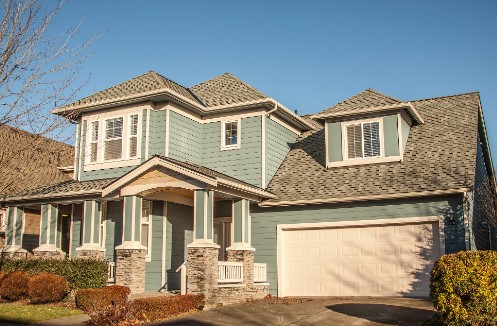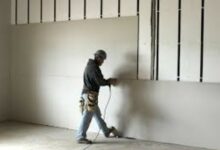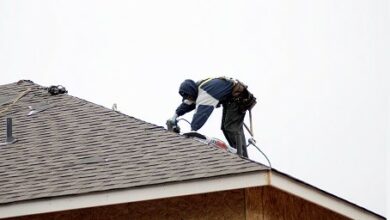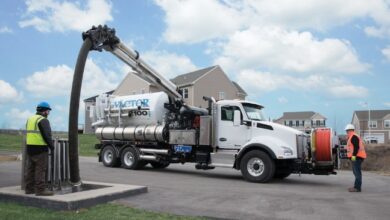Understanding Roofing Warranties: What Homeowners Need to Know

Roofing warranties are crucial for protecting your investment in your home’s roof. They provide homeowners with assurance and financial protection against unexpected issues and defects that may arise after installing a new roof. However, understanding the specifics of these warranties can be complex, with various types and conditions to consider. We will explore the key aspects of roofing warranties that homeowners need to know, helping you make informed decisions and ensure your roof remains protected for years.
Key aspects of roofing warranties
1. Types of Roofing Warranties
There are primarily two roofing warranties: manufacturer warranties and workmanship warranties. Manufacturer warranties cover the roofing materials themselves and are provided by the company that produces the roofing products. These warranties typically protect against defects in the materials and can last for 20 to 50 years, depending on the product. On the other hand, the roofing contractor offers workmanship warranties and covers the installation process. These warranties ensure the roof was installed according to the manufacturer’s specifications and industry standards. Workmanship warranties usually range from 1 to 10 years, covering issues arising from poor installation practices.
2. Understanding Manufacturer Warranties
Manufacturer warranties are essential for protecting the materials used in your roofing system. These warranties often come in different levels, such as standard, extended, and prorated warranties. Standard warranties cover basic material defects and are usually included at no additional cost. Extended warranties offer more comprehensive coverage, often including materials and labor, but may require an additional fee. Prorated warranties decrease in value over time, meaning the longer you own the roof, the less coverage you receive. It’s important to thoroughly read and understand the terms of a manufacturer warranty, including any exclusions or conditions that may void the warranty.
3. Key Components of Workmanship Warranties
Workmanship warranties are crucial because even the highest quality materials can fail if not installed correctly. These warranties ensure that the roofing contractor stands behind their work and will address any issues arising from improper installation. When evaluating a workmanship warranty, consider its duration and its specific coverage. Some warranties may cover only certain aspects of the installation, while others provide more comprehensive protection. Choosing a reputable contractor from Quick Roofing & Restoration near Longview with a solid track record is also important, as the warranty is only as reliable as the company backing it. Ask for detailed information about the warranty terms and ensure you have a written copy for your records.
4. Common Exclusions and Limitations
Both manufacturer and workmanship warranties often come with exclusions and limitations that homeowners should be aware of. Common exclusions include damage caused by extreme weather conditions, such as hurricanes or hailstorms, and improper maintenance or alterations made after the roof installation. Additionally, warranties may not cover damage from installing new equipment, such as solar panels or satellite dishes, unless performed by an authorized contractor. Understanding these exclusions and limitations is crucial to avoid unexpected expenses and ensure your warranty remains valid. Always read the fine print and ask questions if any terms are unclear.
5. The Importance of Regular Maintenance
Regular maintenance plays a vital role in keeping your roofing warranty valid. Most warranties require periodic inspections and maintenance to ensure the roof remains in good condition. This can include cleaning gutters, removing debris, and addressing minor repairs promptly. Failure to perform regular maintenance can void your warranty, leaving you responsible for any repairs or replacements. Keeping detailed records of maintenance activities and inspections can provide proof of compliance with warranty terms, helping to safeguard your investment. Establishing a maintenance schedule and working with a trusted roofing contractor can ensure your roof receives the necessary care to remain protected.
6. Transferring Warranties to New Owners
If you sell your home, it’s important to understand whether your roofing warranty is transferable to the new owners. Some warranties include provisions for transfer, allowing the new homeowners to benefit from the remaining coverage. This can be a significant selling point, adding value to your home and providing peace of mind to potential buyers. However, the transfer process may require specific steps, such as notifying the manufacturer or contractor and paying a transfer fee. Review the warranty terms to determine the transferability and any associated requirements. Ensuring a smooth warranty transfer can enhance your home’s appeal in the real estate market.
7. Making a Warranty Claim
If you need to make a warranty claim, it’s important to understand the proper procedure to follow. Review the warranty terms to determine whether the issue is covered and what documentation is required. Contact the manufacturer or contractor to report the problem and provide any necessary information, such as photos or inspection reports. Keep records of all communications and follow up regularly to ensure that your claim is processed on time. Understanding the claims process and being prepared with the necessary documentation can help expedite the resolution and ensure that your roof receives the attention it needs.
Read also: Shed Light on Useful Barn-Shed Space and get Your Shed Out of the Way
Conclusion
Understanding roofing warranties is essential for homeowners looking to protect their investment and ensure the longevity of their roofs. You can make informed decisions and avoid potential pitfalls by familiarizing yourself with the different types of warranties, key components, common exclusions, and maintenance requirements. Regular maintenance, proper documentation, and adherence to warranty terms are crucial for keeping your coverage intact. Whether installing a new roof or dealing with an existing warranty, this knowledge will help you navigate the complexities of roofing warranties and ensure that your home remains safe and secure.








